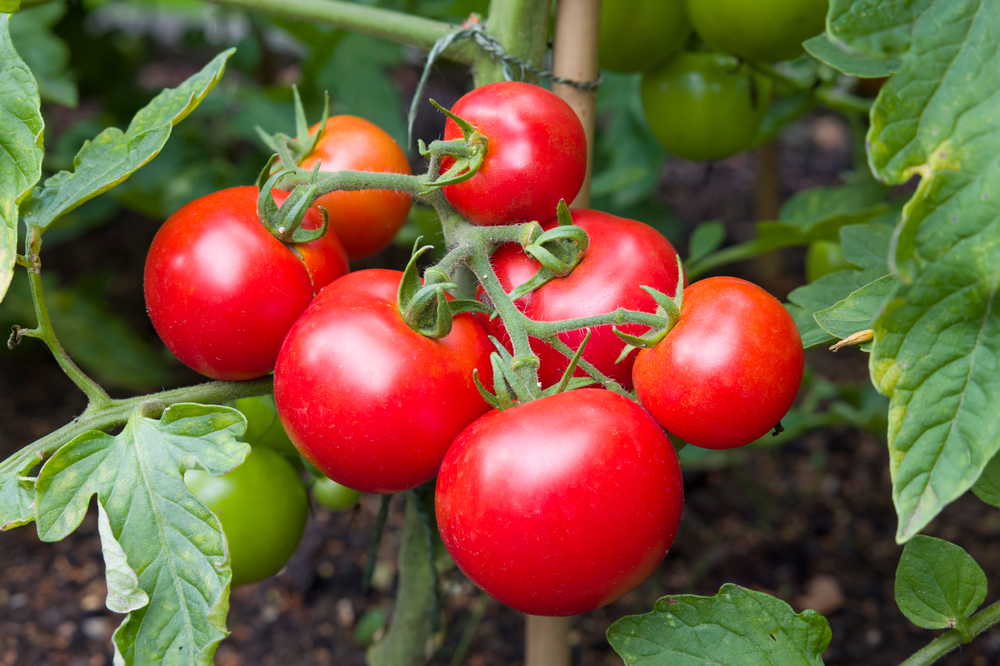According to a recent study by Toolstation, the most searched-for gardening and outdoor DIY question in the UK is how to grow garlic, with a yearly search volume of 95,500.
To help those looking to start growing their own fruit and veg, Toolstation has consulted gardening expert Fiona Jenkins from MyJobQuote to give you the best chance of getting a high-quality crop from your garden.
The Most Searched for Gardening and Outdoor DIY Questions on Google
| Search Query | Total Yearly search results |
| How to grow garlic | 95,500 |
| How long do grass seeds take to grow | 61,240 |
| How to lay turf | 58,590 |
| How to lay a patio | 53,580 |
| How to grow potatoes | 52,900 |
| How to grow tomatoes | 44,750 |
| How to get rid of rats in garden | 42,900 |
| How to keep cats out of garden | 35,880 |
| How to grow strawberries | 33,100 |
| How to lay paving slabs | 28,470 |
Expert advice on the most asked vegetables:
How to grow garlic (95,500 searches)
With how to grow garlic coming in as our most asked gardening question expert Fiona Jenkins from MyJobQuote is on hand to provide advice about to go about growing this versatile and delicious bulb.
Fiona explains, “Garlic will grow well in a sunny spot with well-drained soil. While most people plant their garlic in autumn there are varieties such as Solent Wight and Merseley Wight that are perfect for planting in the spring. It is an easy plant to grow needing little maintenance and takes up minimal space.
“Make sure to buy your garlic cloves for planting from a garden centre and not the supermarket as they may not be suitable for growing in the British climate.”
How to grow potatoes (52,900 searches)
Potatoes are another great vegetable to start with when looking to grow your own. They can be grown in gardens of all sizes and their resistance to weather makes them one of the easiest veg to grow.
Fiona said, “Potatoes are one of the staples of allotments and veggie plots and are also one of the most satisfying crops to grow yourself. There are a large number of varieties to choose from, but all are grown from seed potatoes which are not seeds but potatoes which are sprouting. Planting can be done from March to May for harvesting in summer and autumn.
“As the plants grow they need to be ‘earthed up’. This is where soil is piled up around the emerging stems to protect them from frost and exposure to light which can turn the potatoes green, rendering them inedible. If you don’t have the space to grow a drill of potatoes, you can grow them in a large container in your garden or even on a balcony. You won’t get the small quantity, but you can still grow some tasty potatoes. Your potatoes will need regular watering, particularly in warm weather.”
How to grow tomatoes (44,750 searches)
As a key ingredient in so many recipes, it is no surprise that how to grow tomatoes came in at number three in the most searched vegetables to grow. While they need slightly more care and attention garlic and potatoes, tomatoes are still an incredibly popular choice for amateur gardeners.

“Tomatoes are one of the most popular crops for people to grow at home. They can be started from seed or young plants, grown outside or in a greenhouse, in the ground or in containers. As such a versatile and easy plant to grow, unsurprisingly, they are very popular for amateur as well as seasoned gardeners. When grown outside your tomato plants will need a sunny, sheltered spot and protection from any frost,” Fiona explained
“The plants need to be well watered and fed to produce good crops. Seeds are sown in late February to the middle of March if the tomatoes are to be grown in a greenhouse or late March to the beginning of April if they are going to be outside. To germinate, tomato seeds need temperatures of 18°C until the seedlings appear. Young tomato plants can be planted out in early summer when the temperature is reliably over 16°C. They need free-draining, rich soil which also retains moisture to thrive.”
How to grow strawberries (33,100 searches)
To help satisfy your sweet tooth, we also have expert advice on growing delicious summer strawberries. Strawberries are a versatile plant that can be sown in spring, but they also require plenty of attention to deliver a quality crop.
Fiona said, “If you are choosing to grow strawberries straight from seed, sow the seeds indoors in late winter or early spring. Ensure the seeds are covered lightly with compost and maintain a consistent temperature of around 15-20°C. Once the seedlings have emerged, transfer them to individual pots and continue to nurture them indoors until the risk of frost has passed.
“If you don’t have an indoor space to use, you can pick up pre-planted seedlings from your local garden centre that you can then plant directly in a sunny spot in your garden. Provide them with adequate spacing to allow for proper growth and airflow. Regularly water the plants, ensuring the soil remains moist as your strawberries gradually ripen, ready to be enjoyed in the summer months.”





